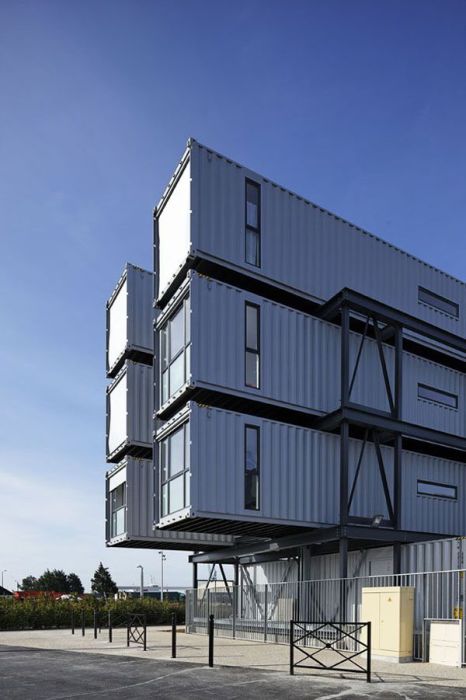|
|
Shipping Containers Dormitory
|
Many colleges and universities no longer use the word "dormitory" and staff are now using the term residence hall (analogous to the United Kingdom "hall of residence") or simply "hall" instead. This is promoted as better describing a living and learning community that is part of the larger academic institution. When the word "dorm" was first adapted for universities and colleges, the atmosphere of the buildings served as places for students to sleep. Often students had a curfew to be in the building for "lights out" and a "dorm mother" was in charge of running the building. This is no longer true as residence halls as of 2007 strive to provide a more inclusive community for residents. Features of life such as cafeterias, academic centers, active and passive programming, resident assistants and hall coordinators have given a new experience to living on campus.
College and university residential rooms vary in size, shape, facilities and number of occupants. Typically, a United States residence hall room holds two students with no toilet. This is usually referred to as a "double". Often, residence halls have communal bathroom facilities.
In the United States, residence halls are sometimes segregated by sex, with men living in one group of rooms, and women in another. Some dormitory complexes are single-sex with varying limits on visits by persons of each sex. For example, the University of Notre Dame in Indiana has a long history of Parietals, or mixed visiting hours. Most colleges and universities offer coeducational dorms, where either men and women reside on separate floors but in the same building or where both sexes share a floor but with individual rooms being single-sex. In the early 2000s, dorms that allowed people of opposite sexes to share a room became available in some public universities. Some colleges and university coeducational dormitories also feature coeducational bathrooms.
Most residence halls are much closer to campus than comparable private housing such as apartment buildings. This convenience is a major factor in the choice of where to live since living physically closer to classrooms is often preferred, particularly for first-year students who may not be permitted to park vehicles on campus. Universities may therefore provide priority to first-year students when allocating this accommodation.
|
|









